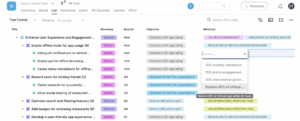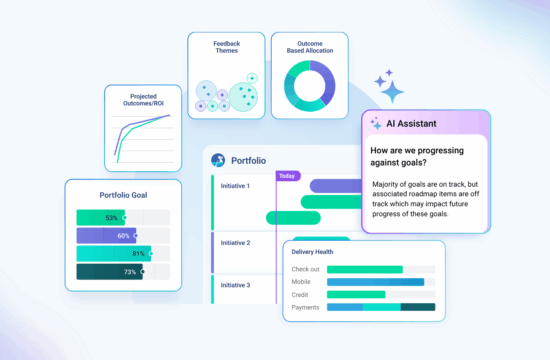The most common resistance from Product Managers (PMs) during a platform rollout is the belief that a new tool is just “more work” or administrative burden, often viewing it as a “leadership team tool” designed solely for tracking. This is a strategic hurdle that must be overcome immediately by shifting the conversation from output to outcome.
For program and portfolio leaders, the operational best practice is to frame your tool (like Dragonboat) not as a reporting mandate, but as the engine that allows PMs to prove their team’s strategic impact and thus, enable seamless stakeholder visibility on key initiatives.
For organizations transitioning from tools like Jira Align, see our guide on modern alternatives that prioritize outcomes over outputs.
How to Connect Execution to Measurable Value
Mandate the Link to Key Results (OKRs)
The platform must function as the definitive system for connecting day-to-day work items (Epics and Initiatives) directly to Key Results (KRs) and strategic objectives. This connectivity is the primary value proposition that cannot be achieved by relying solely on execution tools like Jira.
Actionable Step: Leverage the portfolio views (List View or Portfolio Relations) to create a required field check, ensuring that every significant Initiative or Epic is tied to a measurable Objective. Without this link, the item is flagged as non-strategic or missing context.

Integrate and Visualize Product Metrics
To drive outcome-based behavior, product managers must be able to instantly measure if a delivered feature actually resulted in an uptick in key metrics, such as user conversion or NPS. This product loopback capability validates the PM’s decisions.
Actionable Step: Set up Product Metrics within Dragonboat (leveraging integrations with tools like Tableau Cloud or Pendo). Use customizable dashboards to display these metrics alongside the Initiatives released. This visualization allows PMs to clearly show: “We delivered product X, and it increased international growth by 20%”.

Discover the 6 essential types of portfolio visibility that enable this level of metric-driven validation.
Shift Focus from Outputs to Shared Outcomes
By establishing these clear links, the organizational dialog fundamentally shifts. Meetings are no longer about reporting activity (“Is the feature delivered?”) but about celebrating measurable, shared outcomes. This transparency empowers PMs by validating their work against outcome driven KPIs while providing real-time transparency to key stakeholders.
By making Dragonboat essential for defining and validating strategic success, the focus shifts from reporting activity to celebrating measurable outcomes. This in turn, drives internal tool adoption while reducing friction from delivery teams.

See how Cornerstone maximized holistic experiences and product ROI across multiple portfolios using this outcome-driven approach.
Proving value is step one, but driving organic adoption requires solving immediate pain. In our next post, we share the blueprint for “pull” adoption, focusing on delivering quick wins by tackling high-pain problems like resource capacity and cross-team dependencies.
Your PMs aren’t just delivery managers—they’re strategic value drivers. Give them the platform to prove it. Book a demo today.



